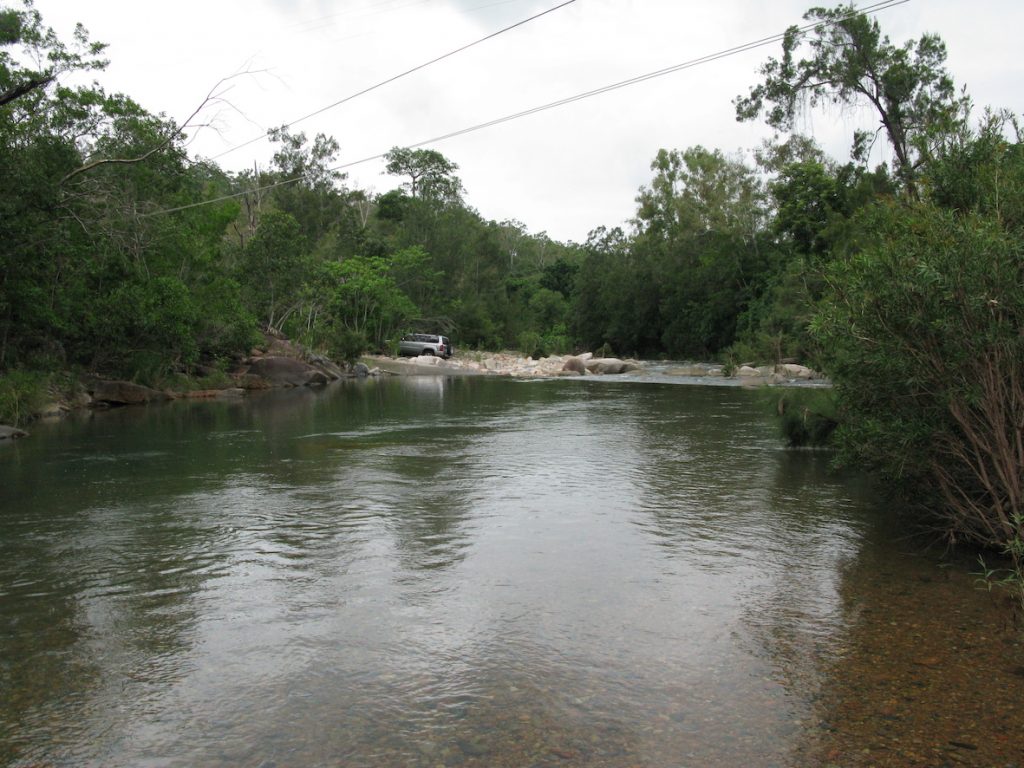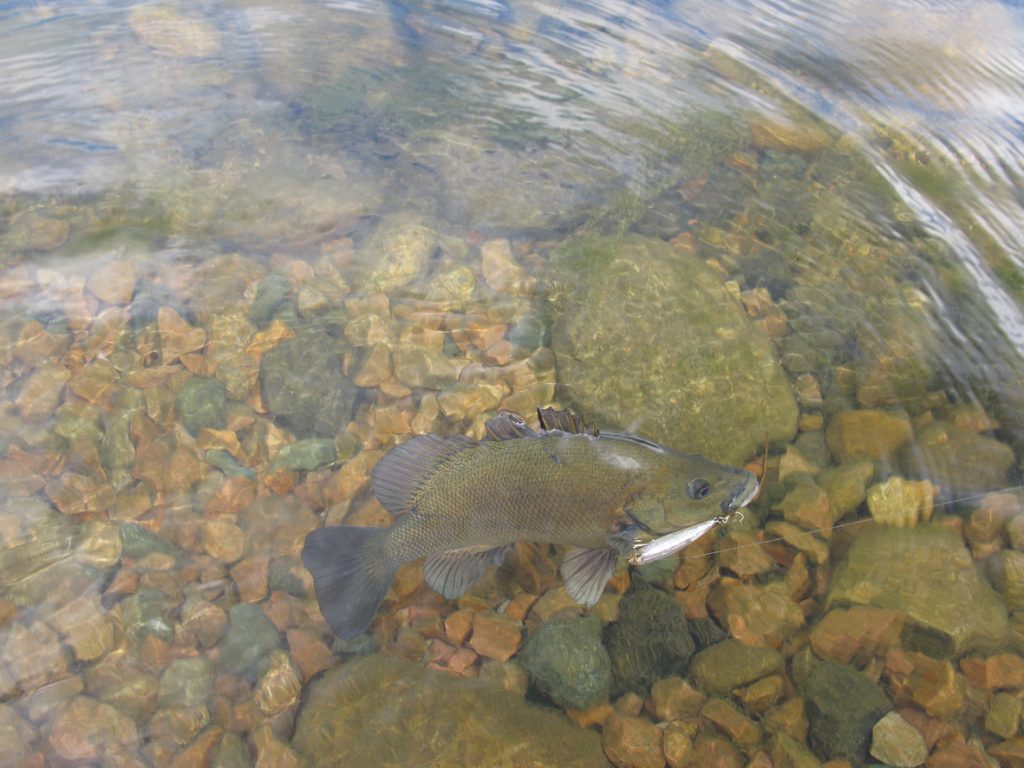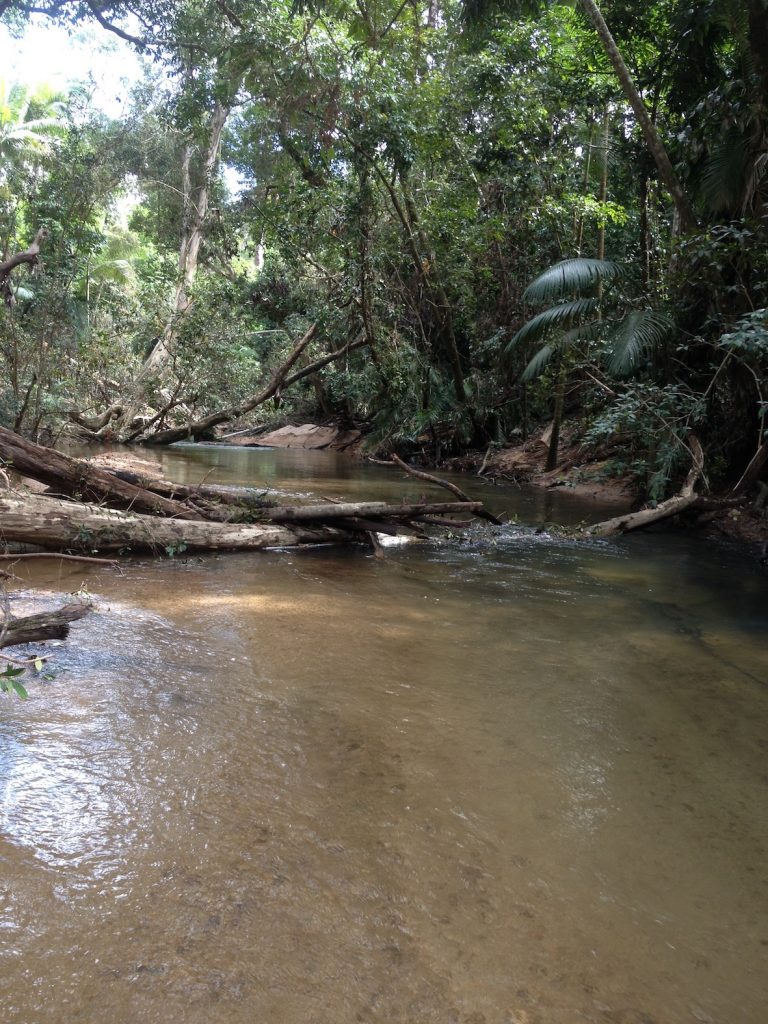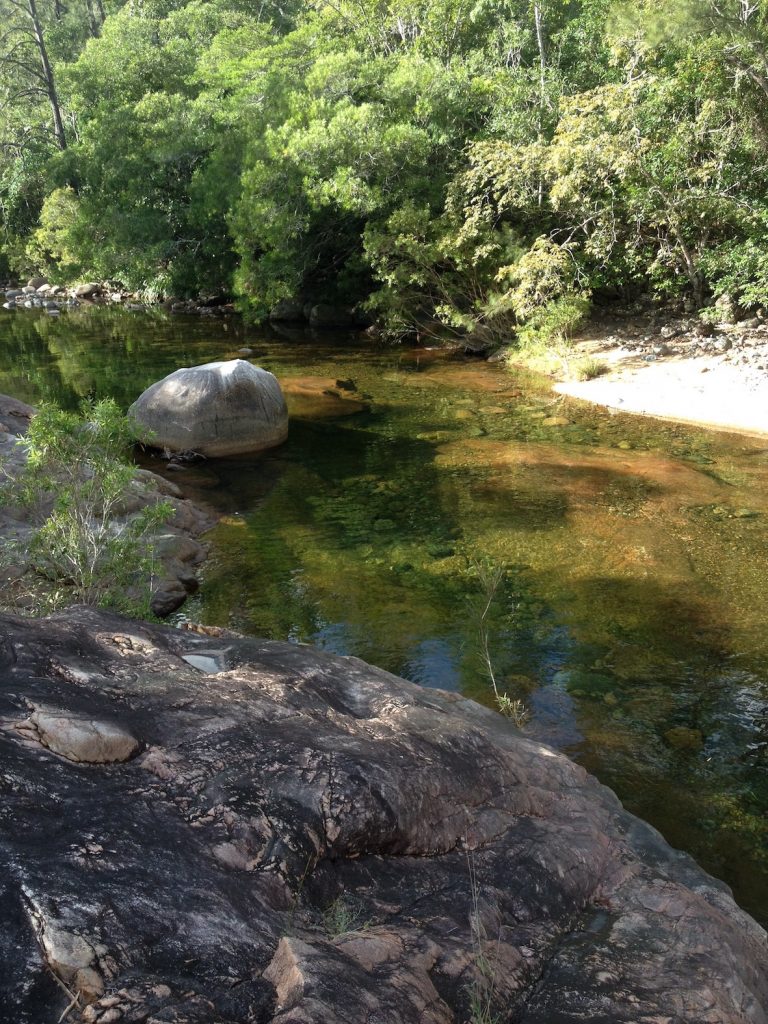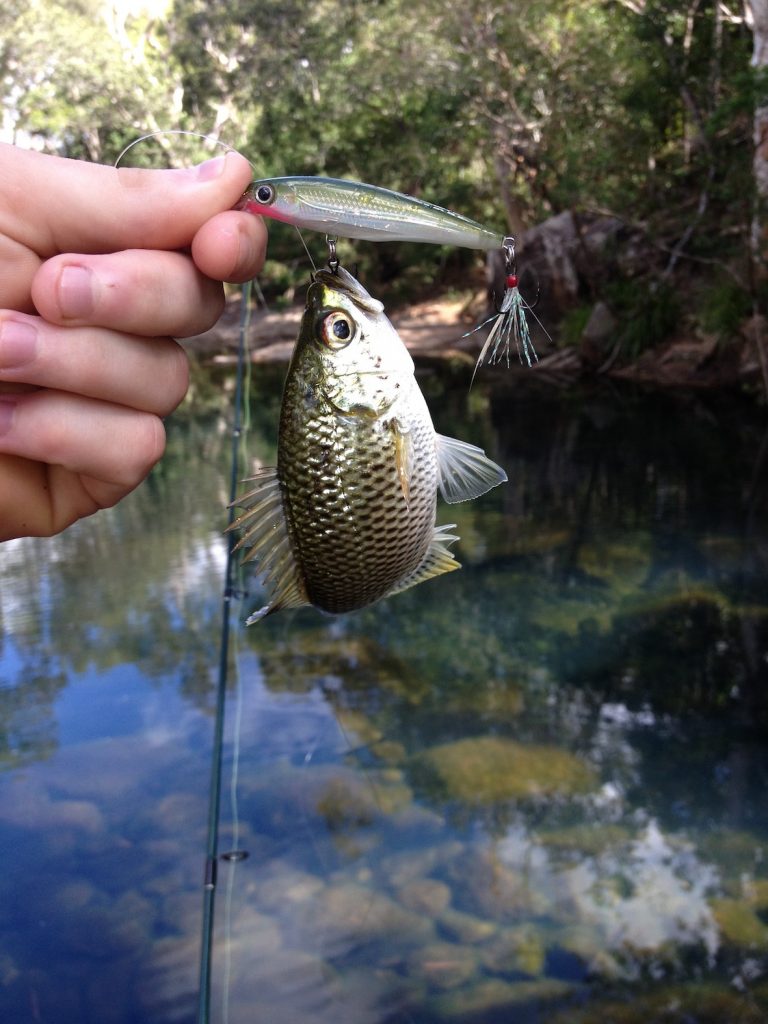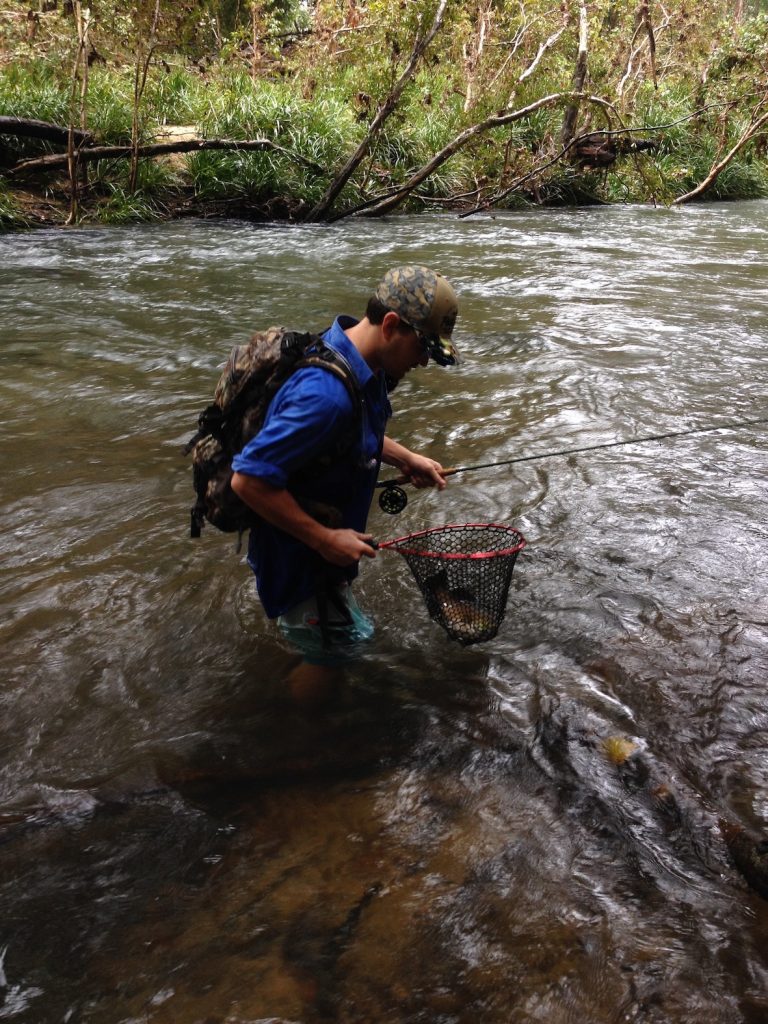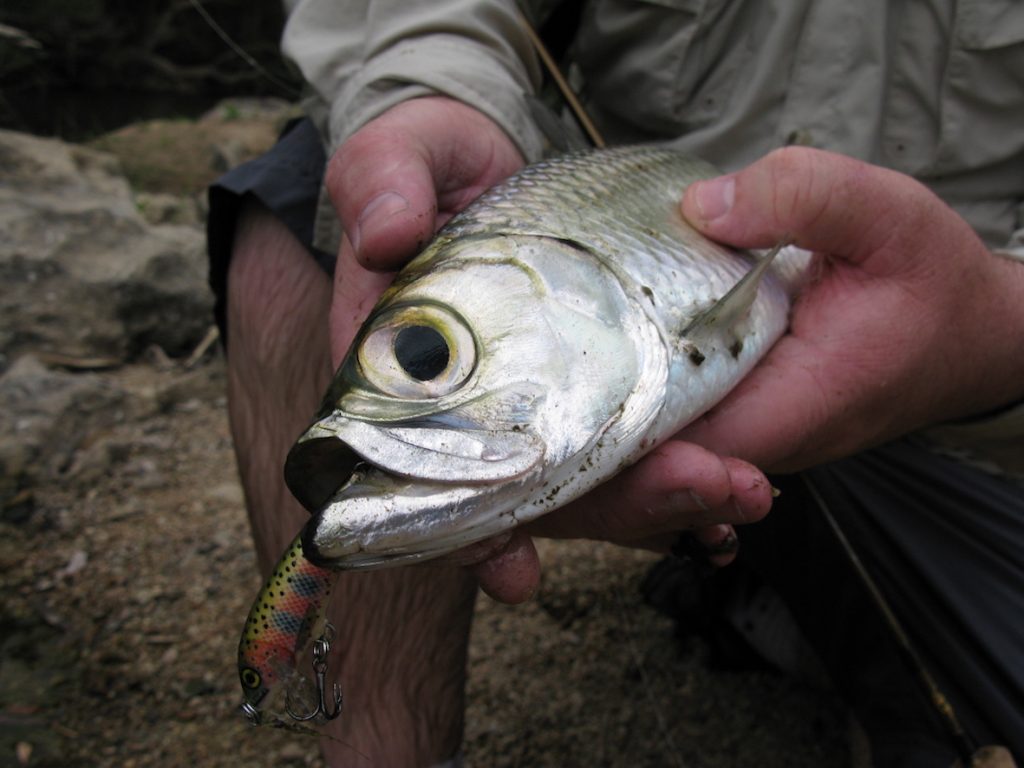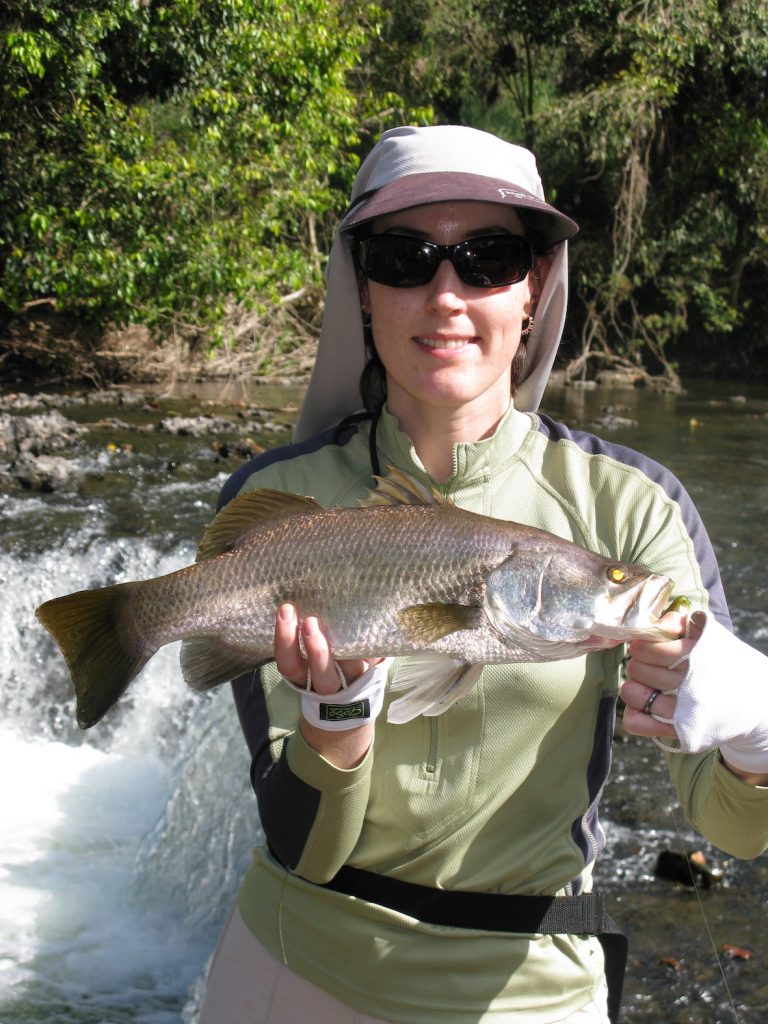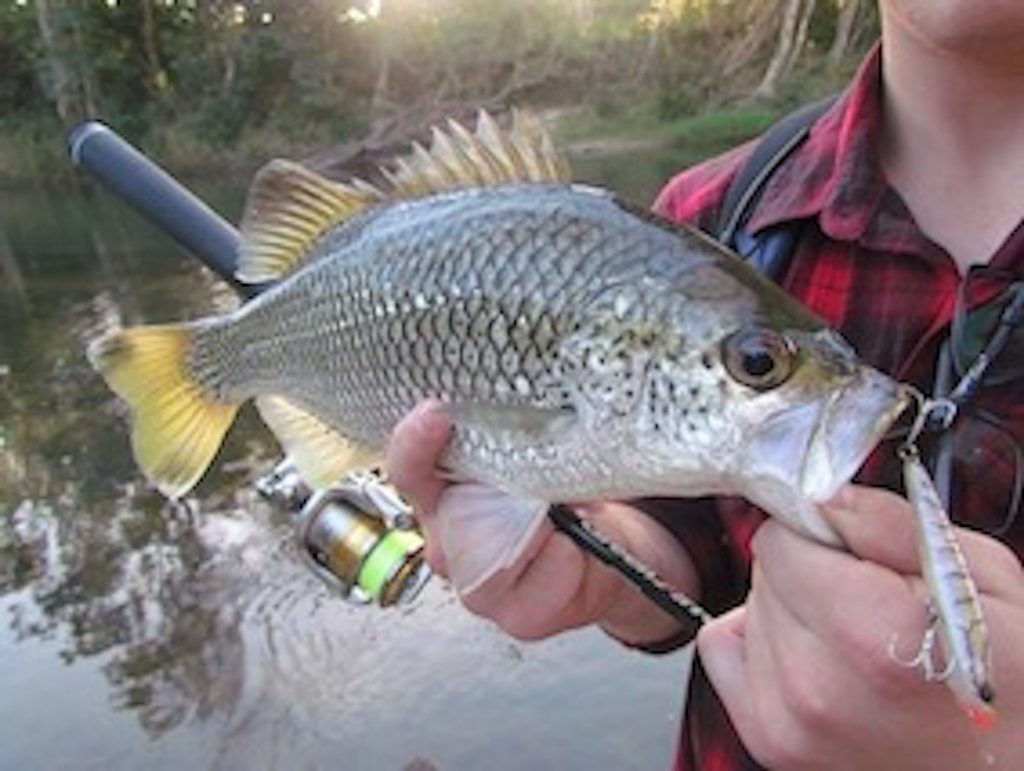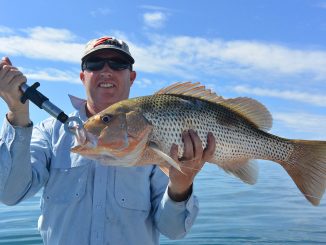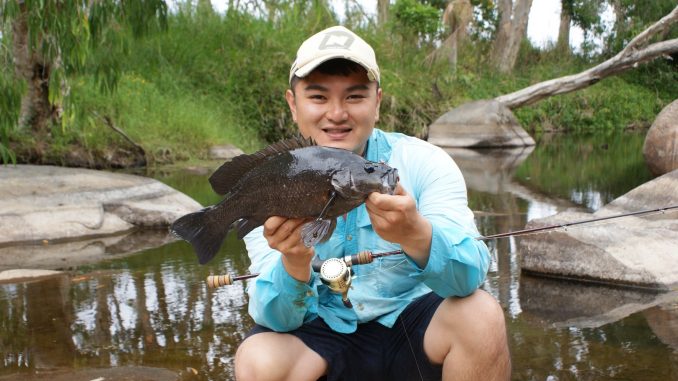
by Elliot Fooks •
With he world still more or less in disarray, most of us have gotten used to a reality of less fishing, or at the very least, fishing only in water a short distance away. With the way things are at the moment though, interstate travel is very difficult, and international travel is pretty much impossible. Anglers need to stay in their own area code for fishing fix. This is where tropical freshwater streams can offer a really good alternative to those glamorous interstate sojourns.
The nice thing about Queensland and WA is that they extend north-south for thousands of kilometres, meaning you can travel in either direction for a few hours and suddenly feel like you’re in a different country! For Brisbanites used to the temperate climate of the South East, the Tropical North provides a wildly different backdrop for your fishing, and of course, a host of different species. In WA, those familiar with the green countryside around Perth suddenly find themselves in sandy, barren and windblown countryside only a few hours drive north. In both these massive states, there is flowing freshwater in the tropical north. These streams offer some fantastic fishing year round (outside of substantial weather events), and in places like QLD and WA, they provide southern anglers wanting to stay within their state a rare treat.
WHAT’S THE BIG PULL?
Over the last decade or so, I’ve fallen in love with the tropical north’s many sweetwater streams and the aggressive fish that reside within. Watching a dozen or so sooties or jungle perch fight over your lure with a backdrop of rainforest and tropical birdlife is about as good as it gets for a lure angler. In these areas, there’s also a decent chance of nailing other northern prizes, like barramundi and mangrove jack, and oddballs like snakehead gudgeon, khaki grunter, tarpon, longtom and more.
Southern anglers can easily drive up in their own vehicle and stay a few days, exploring the area with the help of a map. Alternatively, flying up (if permitted) and hiring a car is a very time efficient method to grabbing a northern sweetwater fix.
The real beauty of it is you don’t need a boat! Wind becomes a non-factor in these small sheltered waterways, and unless the place is in serious flood or totally dry, you should be able to connect up to some hard-fighting fish!
SOME GEOGRAPHY
In Queensland, the two main prizes of the freshwater streams are sooty grunter and jungle perch. Sooties, while found sporadically in some streams just north of Brisbane, officially start their range just north of Rockhampton, with good populations in the Pioneer River in the Mackay district. Jungle perch have suffered severe habitat destruction in the last century, and while rumoured to still exist in several streams north and south of Brisbane, only become a reliable target from Mackay up to the tip of Cape York.
In WA’s Kimberley region, western sooty grunter (an identical twin to the sooties in the east) are the most viable target. They are documented to exist from the Meda River and north into the Northern Territory. These streams may not flow all year round, as they do not rise in rainforest areas like those in TNQ. These areas are also more difficult to access, and short trips in the interest of a quick fix might not be on the table. For the adventurous angler, however, it may be a challenging yet rewarding experience.
Cape York’s West Coast and Gulf regions are similar in character to those in WA, where sooties are again the mainstay of the fishing, with northern or gulf saratoga the icing on the cake.
ALL FOUR SEASONS
One of the best things about creek fishing in the tropics is that it can be done all year round – conditions permitting. There are better times, of course, but these will vary from creek to creek. Not having to synchronize your trip with any sort of special weather event or moon phase makes this fishing convenient, and this is why it’s such a great ‘back up’ plan if your original plan doesn’t come together.
Let’s take a look at the different seasons in depth.
SUMMER
Summer would seem like a logical go-to for some people, and in some areas it is, however summer in the tropics can be very unpredictable.
At the beginning of summer, if the usual storms have yet to pick up, the creeks may well be at their lowest. In this situation, it pays to prepare yourself for a fair bit of walking. Seeking out the slightly deeper pockets between the shallow riffles is key to locating any fish in low water levels. With that said, I’m constantly amazed by how comfortable these little tropical predators can be in super shallow water, especially sooties. On several occasions I’ve thrown a ‘speculator’ into a shallow, snaggy pocket no more than 15cm deep, and been surprised to see an angry sooty between 30-40cm shoot out from under the bank on its side to nail my lure or fly!
Lure selection at this time is usually more difficult than in other times, as the water is clear and the fish can get a good look at your offering. In the deeper stuff, smaller crankbaits, spinnerbaits, beetle spins and soft plastics are a good choice. When the shadows lengthen and the bug activity increases, the usual poppers, fizzers, paddlers, walkers and bent minnow styles will get the job done. If you can see fish following lures but not eating them, be prepared to change your retrieve or presentation all together.
In a high-vis situation like this, casting well ahead of yourself as you wander or wade upstream is important. Jungle perch in particular are very tuned into their surroundings, and once you spook them, you’ve missed your chance!
The second half of summer can often see small creeks flooding regularly, and while not ideal for your fishing either, can offer some unique opportunities.
When floodwaters start to recede and the water clears up while still running high, the fish can become very active in an attempt to spread themselves out in the system. It can also offer flood dependent species like barra a chance to venture well upstream of the tidal limits.
When fishing high rivers, seeking out eddies and structure that breaks current is a good start. Don’t be surprised to see sooties and JPs chase a lure into the fast stuff, however, as these nutrient-deficient streams don’t offer a lot of tucker for these fish. In most scenarios, small predators, and particularly sooties, won’t pass up a free feed.
AUTUMN
Autumn in the tropics is usually a very pleasant time to be outdoors, with intermittent rain and a possible late summer storm the only real bother. A good wet season will see most rivers flowing nicely, and the fish should be active. Sooties generally like to have current and structure, and JP’s favour pools where there’s an in-flow point to wait under for falling prey. In autumn, you should have those ingredients in good supply!
Arming yourself with a good variety of lures is very important when there’s lots of fishable water, with shallow runs, slower pools and giant snag complexes all likely to hold fish. With any luck, more water should mean less walking between likely areas and more fishing, so don’t be afraid to really work a pool over. While repeat casts to the same area aren’t very useful for these species, a cast a metre or two from the last one might make a difference.
Having the ability to change lures quickly is a very economic way to fish in high water. Carrying a second rod or using a snap to make fast lure changes to meet the requirements of each pool is extremely handy.
Be aware that areas that you wade in the spring and summer months might not be suitable for wading just after the wet season, and the banks may be slippery.
Something else to think about is vehicular access. In areas where you may have to navigate unsealed road, wet conditions can obviously make access difficult. In saying this though, it’s certainly not necessary to hit the dirt roads in search of these little battlers.
WINTER
Believe it or not, winter can actually provide some excellent sweetwater fishing. Stable creek levels and comfortable temperatures make this activity a treat, but there are some things to consider.
While sooties are their usual hungry selves during winter, JPs, just like bass down south, make their annual migration to the salt to spawn. Don’t think freshwater stretches will be completely devoid of these speckled prizes though, as a portion of the population will always remain above the tidal limit during the spawning season.
At this stage of the year, depending on the wet season, the creeks may be starting to get a little low and oxygen depleted, so it pays to stay up to speed with the river levels if this information is available to you.
At any time of year, the anglers who venture furthest from their access points will usually score better numbers and size, because while this sort of fishing isn’t super popular, there are enough who do it. Fishing water that hasn’t seen pressure at least for a while is preferable, and the relatively mild winters in this part of the world make walking long distances a lot easier than in summer!
SPRING
Spring is probably my pick of the lot if I’m in a position to choose! My reasoning is fairly personal, and I’m not necessarily saying this is the best time.
I like that the creeks are usually fairly low without being bone dry, the temperatures are still fairly comfortable, the chances of the weather turning bad are slim, and it’s also probably the best time to drop in and visit some of the barramundi impoundments!
Spring usually sees a sharp increase in fish feeding activity across the board, and cricket scores of fish can be had on warm afternoons in shallow, clear running tropical creeks.
Sometimes the stormy season can arrive early and get the creeks flooding, but these first good drops of rain can see jungle perch, in particular, using the extra flow to ascend the system’s rapids. If you get the chance to fish a creek after a nice rise, without the river being in full-scale flood, you should be able to nail some quality fish.
HAZARDS
The tropical north isn’t without its dangers, and wading these creeks isn’t for the careless or negligent.
The biggest potential danger in these environments is saltwater crocodiles. These big reptiles can and will venture upstream well past the tidal influence, and this is more likely during the wet season. During the wet, female crocodiles venture inland to swamp and floodplains to deposit their eggs, and a high-flowing creek is an excellent highway. As a general rule, I do not wade in anything I can’t see the bottom of, and when fishing any deeper pools, I always make sure I have room to move should I spot something suspicious. It pays to heed warning signs and listen to locals. If it doesn’t feel quite right, don’t risk it. Even though you’re probably safe 99% of the time, that 1% can see things go very, very, very wrong if you’re careless.
Snakes are a hazard when bank fishing anywhere, but in the tropical north there are plenty of them, particularly during spring. Watch your step, wear adequate footwear, and preferably long pants.
Other wildlife, such as dogs, pigs and cassowaries, shouldn’t give you too many dramas, especially if you’re fishing with a friend, but it still pays to stay vigilant.
Even without animals, injuries can happen when traversing these rugged places. Slipping off a big boulder or sliding down a scrubby bank could be a real problem, especially if you’re miles from the car. I can remember an incident where my fishing buddy slipped and fell on his tailbone while approaching a pool full of big JPs. Amazingly, he picked himself up and made the cast, securing himself a fantastic JP in the 40cm range on fly gear. After this capture, his only option was to wallow in the river and let the current aid him downstream, as walking was not an option.
If you want to avoid problems with this style of fishing, some preparation can make things easier. Carrying a basic first aid kit, letting someone know where you’re going and when you’re expected to return, fishing with a mate and paying attention to warnings and notices should keep you from encountering too many problems.
FIND YOUR OWN SWEETWATER PARADISE
The great thing about our tropical north is that because it’s such a wet place, there’s literally rivers and creeks everywhere. The general rule for finding fish is ‘anywhere there’s water’, however there are factors that will give you an advantage.
As alluded to previously, venturing beyond the reach of other anglers will give you a better chance of having one of those magical days. This may involve getting sore legs and scratches from the vegetation, but it can be worth the effort. Thinking about your approach when coming up to some likely water can also be the difference between an average day and a cracking day.
So there you have it! It’s fun, accessible, relaxing and an easy way to get a fix during these trying times! Any bass and trout anglers down south will have an absolute ball doing this (once interstate travel is allowed). Additionally, anyone wanting to break into lure fishing is well accommodated for, as these streams offer a great practise arena for the budding lure or fly chucker.
Bring on spring!

